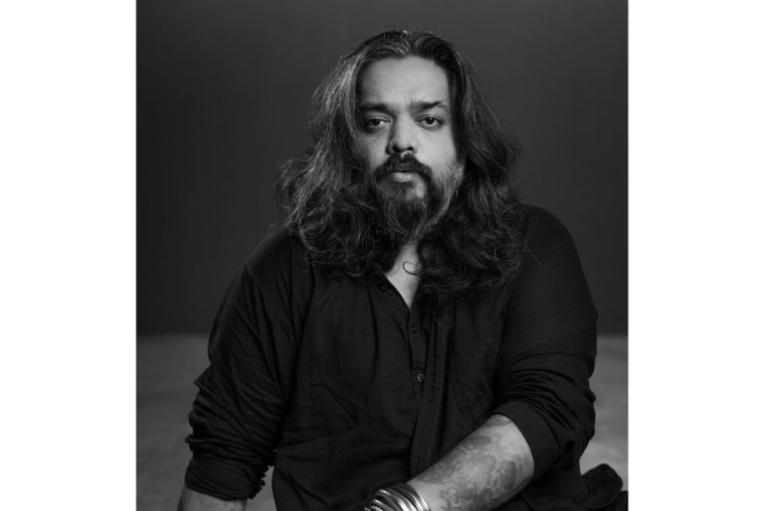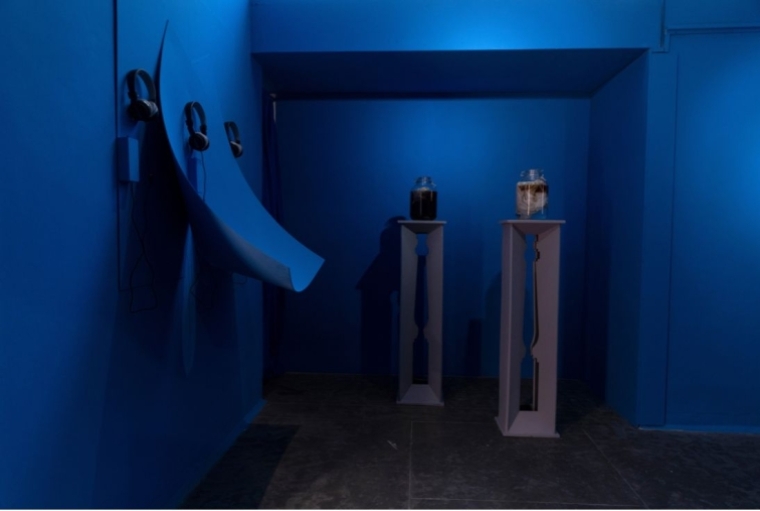

‘The curators of the State of Fashion Biennale, 2024, Rachel Dedman and Louise Bennetts at the very beginning proposed bringing together creative practices in fashion, textiles and contemporary art from across the Global South. They decided to decentralize the Biennale structure and extended an invitation to join their expanded curatorial team and curate a project of my choice in India. Sunny Dolat from Nairobi, Kenya and HanayraÌ Negreriros from SaÌ„o Paulo, Brazil are the other interlocutors for the Biennale. The State of Fashion Biennale has four sites for the 2024 edition – 3 sister sites and one home site in Arnhem with resources being divested to the Global South and resulting in projects that are meaningful and rooted in community.’ Artist, designer and now curator, Kallol Datta shares his thoughts on the importance of fashion today and its impact on society.

Kallol Datta
The theme of the Biennale is Ties that Bind — how did you approach this extremely relevant subject and what was your curatorial process?
Textiles and garments degrade at a pace faster than one would like in the Indian Subcontinent. The humidity, temperatures and insect activity—all work in a tandem wherein the cloth ages rapidly. The Bengaluru sister site project for the State of Fashion Biennale brings garment-making into the visual arts space. The starting point of the curatorial process was based on my long-term enquiry into native wear clothing and clothing practices of the region. Can we think of providing care to clothing when we hesitate in taking care of ourselves? Can we imagine offering and applying restorative and palliative care to textiles while seeking resting spaces for ourselves? And how does one find the headspace to approach a mutu- ally inclusive state of safe-keeping when we are collectively witnessing and undergoing so much turmoil? The guilt attached to seeking out care, accessing comfort in memories and probing episodic events is immense.
‘...of involution, of languor...’ foregrounds radical care as a curatorial principal. The project is positioned as a proposition against a landscape where the body, the cloth and the act of swaddling oneself is political. Indu Antony, Rujuta Rao and Swati Kalsi highlight care at the forefront of their artistic and research projects.
In a region where water is deified, seen as a conduit to spiritual cleanliness, as a means to attaining purity; Indu and the women of Namma Katte address the scarcity of water by repurposing used clothing to highlight the varying structural inequalities in their everyday lives. Indu’s project is accompanied by a short film by filmmaker Rusha Bose on the artist’s community inter- vention – Namma Katte – a space for women to do abso- lutely nothing. Rujuta Rao foregrounds complex human conditions by macerating textile and non-textile belongings of people who bring her comfort thereby creating systems of self-care. Textile designer Swati Kalsi’s creative research project is about the potential to form a radical system of knowledge-sharing between her and the craftspeople and artisan groups she works with and thereby formulating channels of care through assistance in technology, skill updates and design research.
How can fashion contribute to society? As consumers and makers, what do you think one should be conscious of when buying and creating fashion?
There exists enough clothing today to last six generations of humans. As makers one has to be aware that anything being produced right now will mostly probably end up in a landfill or be sold by the Global North at a profit to the Global South (under coercion). Is it absolutely necessary to make garments for the sake of making garments? Clothing has been used as a marker by historians and members of academia to extract metadata of the past. Shouldn’t clothes-making today be an anthropological exercise at the very least?
While adopting sustainable lifestyle practices in our daily lives is commendable, consumers and makers collectively need to hold giant corporations, repeat offend- ers and governmental bodies accountable so that the goalposts of industry standards and sustainable practices are shifted, laws are passed and effectively implemented.
We need to be braver. We need to see clothing as something beyond a utilitarian item which is to be worn. We need to acknowledge the politics of clothing and how everything intersects. Our shopping habits and production methods cannot exist in a vacuum.

What progress have you seen in fashion in the last decade?
I am thrilled that non-industry voices are in the main- stream and they are opining about clothes, textiles, their making and consumption. I am relieved that contemporary makers are able to enter spaces which weren’t affordable to them—museums, galleries, cultural centres and foundations.
I’ve had folks ask me what is the need for a fashion biennale to exist. Globally, what you wear makes you an immediate marker of your community, donning a pair of jeans could mean losing your life to violence and children are forced to miss out on school days because of unwashed uniforms due to zero water supply; clothing is and will always be political.
Calling out hyper-fascism and hyper-nationalism in design, fashion, films and art is slowly building momentum. And that is wonderful.
This is an exclusive excerpt from our May EZ. To read the entire article and more such pieces, follow the link here.
Words Platform Desk
Date 20.05.2024